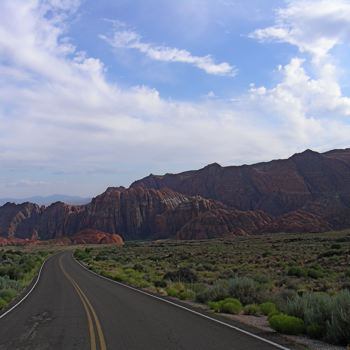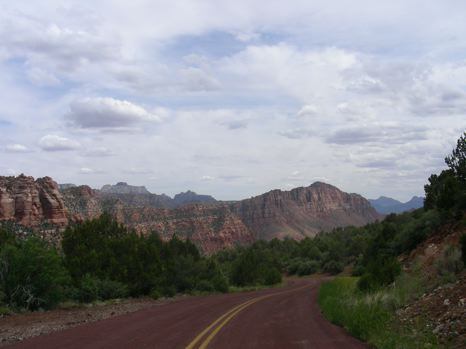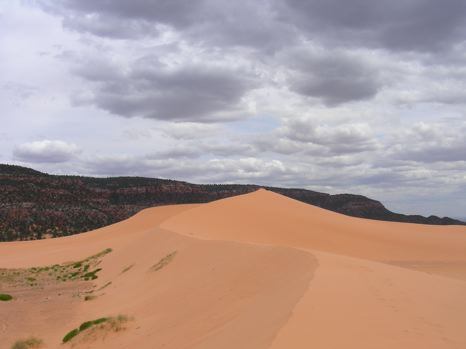Travel Tips
Grateful Traveler: This Land Is Our Land, An American on America
 The first time I ever saw Utah’s Zion National Park I was in the company of a German friend.
The first time I ever saw Utah’s Zion National Park I was in the company of a German friend.
I was already in my late 20s and I’m sorry to say that, although I only lived a car-ride away, I had barely heard of it.
The same could not be said for my friend. “Europeans are in awe of the American West,” she told me. “There’s nowhere else on Earth like it. Europe, we have beautiful cities and towns. But all our wild land is gone. Every German hopes to come here.”
Her statement was certainly born out by our experience on the trails. It seemed like she was speaking German to everyone we met and I was speaking … well, not at all. Most people in the park were from Europe. Americans were the distinct minority.
Fast forward 30 years. My family just returned on Sunday from a trip to Zion and Bryce National Parks. The predominant language we heard? OK, it was English. But just barely.
Most of the people visiting the park seemed to be from places like France, Germany and Italy. We even had dinner one night with couples from Holland and Belgium. So what gives?
 I’m not really sure. It can’t be that Americans don’t love exquisite scenery, starry nights, clean air, lazy rivers moving through red-rock canyons and horizons so vast and spectacular they take one’s breath away. No, it has to be something more—something hinted at in a conversation I had with the manager of Ebenezer’s Barn & Grill, located right outside of Bryce National Park.
I’m not really sure. It can’t be that Americans don’t love exquisite scenery, starry nights, clean air, lazy rivers moving through red-rock canyons and horizons so vast and spectacular they take one’s breath away. No, it has to be something more—something hinted at in a conversation I had with the manager of Ebenezer’s Barn & Grill, located right outside of Bryce National Park.
He told me he was raised in Southern Idaho, only a few hours away from Bryce, but he’d never heard of it. Then he moved to Salt Lake City and he still never heard of Bryce.
Then he moved to Panguitch—a town only miles away from the park. He finally heard of Bryce, but he still never got there. Finally, he married a girl raised right outside the park and together they are raising their family within spitting distance of the hoodoos that have made Bryce world (but not locally) famous.
When Ebenezer’s Grill first opened, he struck up a conversation with—you got it—a German visitor, asking him how he even knew about Bryce when so few Americans did. The man replied that in Europe the American West is iconic.
They know it from movies. They study it in school.
Practically everyone wishes to see Zion and Bryce and Monument Valley and Yellowstone and Capital Reef and Arches and Canyonlands and, of course, the Grand Canyon. Then the man said, “I’m now in my 50s. Coming here has been my dream since I was a young boy.”
 It’s great that Europeans love our home (and the Japanese too). But what will it take to get America on the road and traveling to see what’s ours?
It’s great that Europeans love our home (and the Japanese too). But what will it take to get America on the road and traveling to see what’s ours?
My suggestion is this: Let’s move one of our parks, a small but spectacular one—say Pink Coral Sand Dunes State Park in Utah—to Tuscany. That way we can be sure that Americans will be going in droves to see it.
Or, if that’s too much trouble, how about this? We’re a country of pragmatists. Ninety-eight percent of Garfield County—home to Bryce, Capital Reef and countless other beauties—is owned by either the state of Utah or the federal government. Which, in the words of Woody Guthrie, means that land is our land. It belongs to you and me.
So let’s get on the road and get our money’s worth. I promise you, you won’t regret it. Europe may have the towering spires but we have the heavenly sights.
By Jamie Simons for PeterGreenberg.com. Photos by Jon Jay.
Learn more about America’s National Parks:
- America the Beautiful: Hike America’s Trails
- America the Beautiful: Nine Stops, Nine Miles
- Family Travel: Yosemite Rediscovered Through a Child’s Eyes
- Yosemite Travel Advice–Off the Brochure Travel Guide: Yosemite National Park
- The “Grand Dame” Hotels of Our National Parks
- Video: Great Lesser-Known National Parks
- America the Beautiful: Five Great Hidden National Parks
- America the Beautiful: Postcard from the Edge












